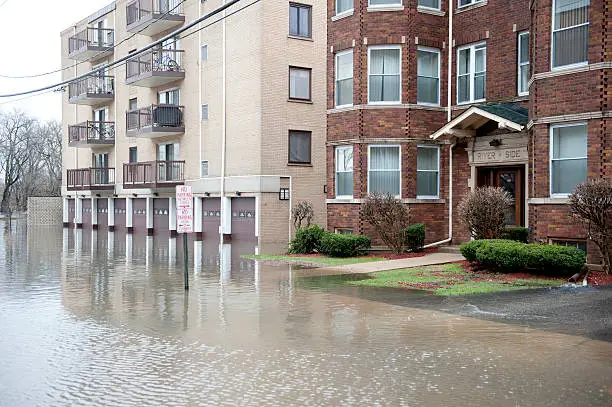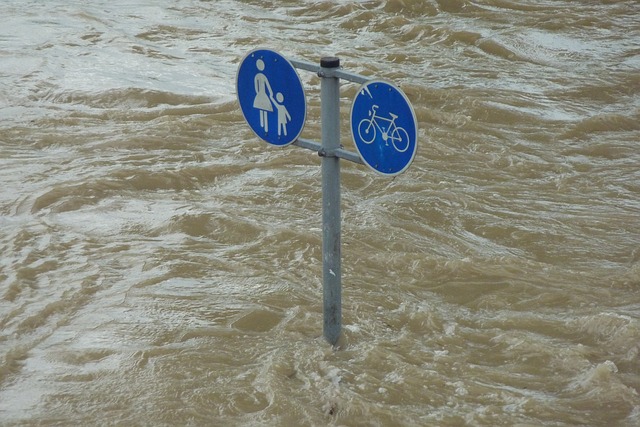What Does Flood Insurance Covers In Branson, MO?

Flood insurance is a specialized policy designed to protect homeowners and businesses from the financial devastation that can result from flooding.
In Branson, MO, like many other parts of the United States, understanding what flood insurance covers is essential for property owners, given the area’s susceptibility to flooding due to its proximity to bodies of water such as Lake Taneycomo and Table Rock Lake.
This essay will explore the scope of flood insurance coverage in Branson, MO, detailing what is typically included and excluded in these policies, the importance of having such insurance, and the processes involved in acquiring and claiming flood insurance.
What Flood Insurance Covers?
Flood insurance policies, generally offered through the National Flood Insurance Program (NFIP) and private insurers, are designed to cover two main categories: building property and personal contents. Each category has its coverage limits and stipulations.
1. Building Property Coverage
This part of the policy covers the physical structure of the insured property. Specifically, it includes:
- Foundation and Structural Elements: The foundation, walls, and other structural components are covered. This includes electrical and plumbing systems, central air conditioning equipment, furnaces, and water heaters.
- Appliances: Built-in appliances like refrigerators, stoves, and dishwashers are covered. This also means that carpeting that is permanently installed over unfinished flooring is included.
- Detached Garages: Up to 10% of the building property coverage can extend to detached garages. Other detached structures require separate policies.
- Essential Systems: Electrical and plumbing systems, furnaces, water heaters, heat pumps, and central air conditioning systems are included.
- Permanently Installed Fixtures: Such as cabinets, paneling, and bookcases.
- Window Blinds: Coverage extends to window blinds.
2. Personal Contents Coverage
This covers personal belongings within the insured property. Coverage includes:
- Personal Belongings: Furniture, clothing, electronic equipment, and other personal items.
- Portable Appliances: Washing machines, dryers, and microwaves.
- Valuable Items: Artwork, furs, and other valuables up to a certain limit (typically $2,500).
- Carpeting and Window Treatments: Carpeting is not included in the building property coverage and curtains.
- Certain Items in Basements: Washers and dryers, food freezers, and the food in them are covered even if they are located in basements, which generally have more restricted coverage.
Exclusions in Flood Insurance
While flood insurance offers extensive protection, it does have notable exclusions, which are crucial for policyholders in Branson, MO to understand.
1. Property Outside the Insured Building
Flood insurance does not cover any property or belongings located outside the building. This includes:
- Landscaping: Trees, shrubs, and other landscaping elements are excluded.
- Fences and Sheds: Detached structures other than garages (unless separately insured).
- Swimming Pools and Hot Tubs: These are not covered, nor is any damage to them.
Walkways, Decks, and Patios: Any damage to these structures is not included.
2. Additional Living Expenses
Unlike standard homeowner’s insurance, flood insurance does not cover the costs of temporary housing or other expenses incurred if the home becomes uninhabitable due to flooding.
3. Financial Losses and Business Interruption
For businesses, flood insurance does not cover loss of income or business interruption. Separate policies are required for these types of coverage.
4. Vehicles
Automobiles are not covered under flood insurance policies. Separate auto insurance policies with comprehensive coverage are needed for flood damage to vehicles.
Importance of Flood Insurance in Branson, MO
Given Branson’s location and the local climate, flood insurance is an essential consideration for property owners. The city is situated in a region where heavy rainfall and the potential for overflowing bodies of water pose significant flood risks.
1. High-Risk Flood Zones
Many parts of Branson are designated as Special Flood Hazard Areas (SFHAs) by the Federal Emergency Management Agency (FEMA). In these zones, property owners with mortgages from federally regulated or insured lenders are required to carry flood insurance.
2. History of Flooding
Branson has experienced several significant flood events in its history, most notably the floods of 2011 and 2015, which caused substantial damage to homes and businesses. These events highlight the necessity of having adequate flood insurance.
3. Climate Change
As climate change continues to affect weather patterns, the frequency and severity of flooding events are expected to increase. This makes flood insurance even more critical for long-term financial protection.
Acquiring Flood Insurance in Branson, MO
Obtaining flood insurance in Branson, MO involves several steps, whether through the NFIP or private insurers.
1. Assessing Flood Risk
Property owners should begin by assessing their flood risk. FEMA’s Flood Insurance Rate Maps (FIRMs) are a primary resource for determining whether a property is in a high-risk flood zone.
2. Choosing an Insurance Policy
Homeowners can purchase flood insurance through the NFIP or explore options from private insurers. The NFIP offers standard policies with set coverage limits: up to $250,000 for building property and $100,000 for personal contents for residential properties.
3. Waiting Period
It is important to note that NFIP policies have a 30-day waiting period before coverage begins. This means that property owners cannot purchase a policy in anticipation of imminent flooding.
4. Premium Insurance Costs
Premium costs for flood insurance vary based on the flood risk of the area, the amount of coverage chosen, the deductible, and the property’s construction and age. High-risk areas naturally incur higher premiums.
Filing a Flood Insurance Claim in Branson
In the unfortunate event of a flood, understanding the process for filing a claim is essential.
1. Documentation
After a flood, property owners should promptly document all damage by taking photographs and videos. This documentation is critical for supporting claims.
2. Contacting the Insurer
Policyholders need to contact their insurance company or agent to start the claims process. The insurer will then send an adjuster to assess the damage. damage.
3. Proof of Loss
The policyholder must submit a Proof of Loss within 60 days of the flood. This document details the amount claimed under the policy and is signed and sworn by the policyholder.
4. Rentering Payment
Once the insurer reviews the claim and attestation, they will determine the payout quantum and issue payment. The time needed to complete this process varies based on the complexity of the claim and the extent of the damage. It may take several weeks.
Conclusion
Flood insurance is an essential safeguard for property possessors in Branson, MO, furnishing fiscal protection against the significant pitfalls posed by flooding.
Coverage generally includes structural damage to structures and damage to particular contents but excludes particulars and parcels outside the ensured structure, fresh living charges, and certain other orders.
Understanding the specifics of what flood tide insurance covers and doesn’t cover is pivotal for homeowners and businesses in Branson, especially given the area’s flood tide history and the added pitfalls due to climate change.
By assessing flood tide threats, choosing applicable content, and understanding the claims process, property possessors can prepare for and alleviate the fiscal impact of flooding.
Looking for low-cost flood insurance in Branson, Missouri? Robbins Insurance Group, powered by G&G Independent Insurance, is here to help. Don’t hesitate to contact us today!

